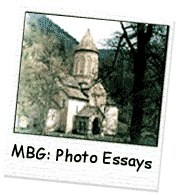 |
QUICK SEARCH
MO PROJECTS:
Africa
Asia/Pacific
Mesoamerica
North America
South America
General Taxonomy
Photo Essays
Training in Latin
America
MO RESEARCH:
Wm. L. Brown Center
Bryology
GIS
Graduate Studies
Research Experiences
for Undergraduates
Imaging Lab
Library
MBG Press
Publications
Climate Change
Catalog Fossil Plants
MO DATABASES:
W³MOST
Image Index
Rare Books
Angiosperm
Phylogeny
Res Botanica
All Databases
INFORMATION:
What's New?
People at MO
Visitor's Guide
Herbarium
Jobs & Fellowships
Symposium
Research Links
Site Map
Search
Introduction Introduction |
| Photo Essay Home | Begin Photo Essay | Outline | Photo Gallery | Search |

|
Rare, Threatened and Endangered Species from the Republic of Georgia Rare, Threatened and Endangered Species from the Republic of Georgia |
Contributor: Shulkina, Tatyana
Scanned Images: Keusen, F.
Editor: Owen, B.
This photo essay shows some of the beautiful plants featured in the report of the same name.
The Republic of Georgia is one of six countries that are home to the Caucasus Mountains; the Greater Caucasus extend through the northern parts of Georgia and the Lesser Caucasus, through the southern regions of the country. Conservation International recently designated the Caucasus as one of its 25 global "biodiversity hotspots" because of the area's exceptional number of endemic species (those found nowhere else) and the high degree of threat to those species. The number of endemic vascular plant species in the Caucasus approaches 1600 (0.5% of the world's 300,000 plant species) and only ten percent of the region's natural vegetation remainsą. With destruction of habitats occurring at a critically rapid pace throughout the Caucasus -- particularly in the three Caucasian republics of Georgia, Armenia, and Azerbaijan, largely as a result of the economic turmoil created in the early 1990’s by political changes in the former Soviet Union -- this area is a high priority for the study of biodiversity and the development of strong conservation measures.
Georgia is very rich botanically, with about 4400 species of vascular plants occurring in its 76,400 square kilometers. Of these, about 380 species, or 9%, are endemic to Georgia. Topographical and climatic conditions produce a mosaic of habitat types in Georgia. The southwestern part of the country is characterized by a warm, humid climate (with annual precipitation of up to 4500 mm), while the southeastern part has a continental climate and is dry. Vegetation types range from dry scrub forest and semi-arid shrublands to mesic and wet montane forests, subalpine and alpine meadows, and a variety of aquatic habitats. Georgia has a unique flora and is a relictual refuge for many plant species that are remnants of an ancient Mediterranean flora.
This checklist was prepared by the Institute of Botany and the Botanical Garden of the Georgian Academy of Sciences in collaboration with the Missouri Botanical Garden. The list is arranged alphabetically by family and by genera within families. For each species, information is provided on habitat, geographical distribution, and endemism (to Georgia or to the Caucasus). Additional information for each species can be found in the new edition of the Georgian Flora (Ketzkhoveli, N.N. & R.I. Gagnidze (ed.) 1971-2001. Flora of Georgia. V.v. 1-13. Metsniereba, Tbilisi).
Over 1200, or 27%, of Georgia's 4400 vascular plant species are considered to be at risk and are designated here by the following terms: extinct (species believed to be extinct; not collected in the wild in recent years); endangered (taxa in danger of extinction if causal factors continue to operate); rare (taxa thinly scattered throughout their range); and vulnerable (taxa whose distribution is diminishing because of habitat modification). Among these 1200 at risk species, 297 are endemic to Georgia and 517 are endemic to the Caucasus.
© 1995-2025 Missouri Botanical Garden, All Rights Reserved
4344 Shaw Blvd.
St. Louis, MO 63110
(314) 577-5100
Technical Support